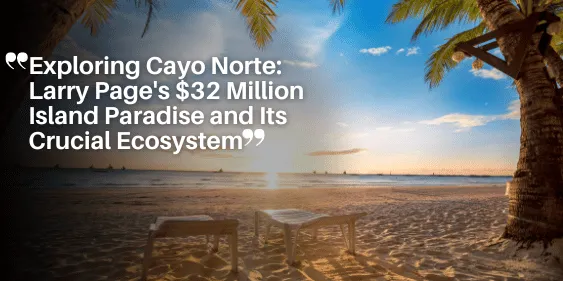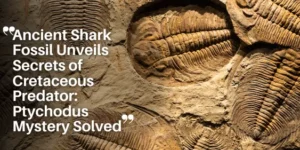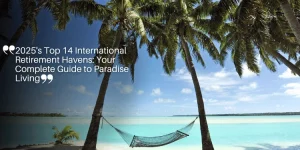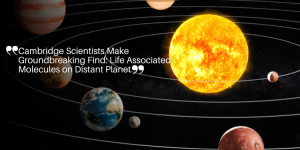Exploring Cayo Norte: Larry Page’s $32 Million Island Paradise and Its Crucial Ecosystem

Larry Page’s $32 Million Acquisition in 2018
Larry Page made headlines in 2018 when he acquired Cayo Norte, a stunning 300-acre island near Puerto Rico, for $32 million. This private island, with its sparkling azure waters and expansive sandy beaches, is the epitome of natural beauty.
Cayo Norte’s Natural Beauty
The island is a natural haven, with a landscape that includes thriving coral reefs and lush vegetation. It’s not just a picturesque retreat; it’s an ecological treasure troves. The island’s vibrant coral reefs play a critical role in sustaining marine life, making it a diver’s paradise and a scientific goldmine.
Ecological Significance
Cayo Norte is more than just a scenic getaway; it holds significant ecological value. The island is a crucial nesting ground for sea turtles and serves as a sanctuary for various marine species. This ecological significance adds layers of responsibility for any owner, particularly someone like Larry Page, who has resources that could be pivotal in preserving this slice of paradise.
Larry Page’s acquisition of Cayo Norte underscores the delicate balance between enjoying a personal haven and safeguarding an ecological treasure. Passionate environmental advocacy is crucial to protect such delicate ecosystems and ensure their survival for future generations.
Ecological Importance of Cayo Norte
Vibrant Coral Reefs and Marine Biodiversity
Cayo Norte is a vibrant hub of marine biodiversity, renowned for its stunning coral reefs that serve as underwater metropolises teeming with life. These reefs are home to a myriad of marine species, from colorful fish and sea anemones to more elusive creatures like octopuses and sea urchins. The complex structures of these corals provide essential habitats and breeding grounds, making them integral to the ecosystem’s health. Preserving these reefs is crucial not just for the species that inhabit them, but also for maintaining the intricate balance of the broader marine ecosystem surrounding Cayo Norte.
Critical Nesting Site for Sea Turtles
One of the most profound ecological contributions of Cayo Norte is its role as a critical nesting site for sea turtles. Each year, female sea turtles return to the island’s pristine beaches to lay their eggs, following a natural instinct honed over millions of years. The soft, white sands of Cayo Norte offer the perfect conditions for this ancient reproductive ritual. Protecting these nesting sites is vital, as any disruption can have a cascading effect on the turtle populations and, subsequently, the marine ecosystem at large.
Sanctuary for Various Marine Species
Beyond its coral reefs and turtle nesting sites, Cayo Norte acts as a sanctuary for various marine species. From the gentle, roaming manatees to the swift, darting schools of fish, the island provides refuge and sustenance to a wide array of sea life. The surrounding waters offer a relatively safe haven from the threats of overfishing and habitat destruction that plague other parts of the Caribbean. This sanctuary aspect of Cayo Norte underscores its ecological significance and the pressing need for ongoing conservation efforts.
Transitioning to Responsible Stewardship
As we delve deeper into the responsibilities of private island ownership, it becomes clear that ethical stewardship is not just a moral imperative but a necessity for preserving such ecological treasures. Balancing the demands of personal use with the urgent need for environmental preservation is a complex but crucial task that awaits those who choose to own and manage these precious landscapes.
Larry Page’s Retreat and Environmental Concerns
Page’s Gradual Withdrawal from Public Life
Larry Page, co-founder of Google, has been retreating from the public eye for years. His acquisition of Cayo Norte in 2018 at a whopping $32 million has only deepened this withdrawal. The island allows him to escape the frenetic demands of his tech empire. Rumors and occasional sightings of hydrofoil boards and helicopters around the island provide fleeting glimpses of Page enjoying the serenity of his private retreat.
Fears of Human Impact on the Pristine Environment
While Cayo Norte offers an idyllic escape, it has also raised significant environmental concerns. The fear is that human activities, even those as benign as boating or hosting visitors, could irreversibly damage this pristine environment. The island’s coral reefs and its role as a critical nesting site for sea turtles underscore the stakes. The delicate balance of this ecosystem means that even minor disturbances could have cascading effects on marine biodiversity.
Balancing Personal Use with Ecological Preservation
Page’s challenge is to strike a balance between personal enjoyment of his island paradise and the need to conserve its ecological richness. Since acquiring the island, Page has maintained a minimal development footprint. This gives cautious optimism to environmentalists who see this as a sign of his respect for Cayo Norte’s natural state.
Stakeholders emphasize the need for responsible management practices that combine leisure with stewardship. For example, Page can collaborate with marine experts and local conservation groups to create programs that both protect and study the island’s unique ecosystem.
This balance is not just about managing one island but serves as a model for the ethical imperatives of private island ownership. The future of Cayo Norte hinges on ongoing efforts to protect its ecological treasures while also allowing for sustainable human enjoyment.
înes
Conservation Efforts and Stewardship
Minimal Development Footprint
Since Larry Page acquired Cayo Norte, the island has seen minimal development. Page’s approach highlights a commitment to maintaining the island’s natural beauty. There are no sprawling villas, docks, or other large structures that might alter its pristine landscape. This restraint fosters a sense of cautious optimism that the delicate ecosystem will remain undisturbed.
Potential for Collaboration with Marine Experts
Page’s resources and willingness to invest open the door to meaningful collaborations with marine experts. By partnering with scientists and conservationists, there is potential to develop innovative strategies for preserving Cayo Norte’s unique habitats.
Opportunities for Scientific Research and Conservation Projects
The island’s untouched environment offers immense opportunities for scientific research and conservation projects. Key initiatives could include:
- Marine Biology Studies: Understanding the intricate dynamics of coral reefs and other marine ecosystems.
- Wildlife Monitoring: Tracking the behavior and population of nesting sea turtles.
- Restoration Projects: Employing methods to rehabilitate any portions of the island’s ecosystem that may show signs of degradation.
These efforts not only protect Cayo Norte but also contribute valuable data to the broader scientific community.
Balancing these initiatives with the island’s natural state sets an important example of how private island ownership can align with ecological stewardship. Ensuring that scientific endeavors do not disrupt the environment is crucial, affirming the commitment to preserving this ecological treasure.
By emphasizing collaboration and sustainable practices, the stewardship of Cayo Norte can serve as a model for responsible island management.
Balancing Ownership and Environmental Responsibility
Owning an island like Cayo Norte comes with ethical responsibilities that extend beyond personal enjoyment. The 300-acre island, acquired by Larry Page for $32 million in 2018, is not just a retreat but a significant ecological asset that requires careful management to preserve its natural beauty and biodiversity.
Ethical Imperatives of Private Island Ownership
Private ownership of such unique and fragile environments imposes a moral obligation to protect and preserve them. For Larry Page, this means ensuring that Cayo Norte remains a sanctuary rather than a playground. Environmentalists and residents alike hope to see Page prioritize the island’s ecological well-being over personal development interests, emphasizing the island’s role as a critical habitat for sea turtles and a variety of marine species.
Importance of Responsible Stewardship
Responsible stewardship involves more than merely refraining from development. It requires active measures to protect and enhance the ecosystem. In Cayo Norte’s case, this can include:
- Implementing conservation projects,
- Establishing strict guidelines for human activity,
- Collaborating with marine scientists to monitor the health of the coral reefs and marine life.
Page has already shown a commitment by maintaining a minimal development footprint, which is an encouraging sign of his dedication to preserving the island’s pristine condition.
Models of Sustainable Island Management
Several models of sustainable island management exist that can serve as templates for Cayo Norte:
- Protected Area Status: Transforming the island into a legally designated protected area can ensure long-term conservation.
- Scientific Research Hub: Developing partnerships with academic and research institutions can promote ecological studies while minimizing environmental impact.
- Community Involvement: Engaging the local community in stewardship activities can foster a sense of collective responsibility for the island’s well-being.
By adopting these approaches, Cayo Norte can serve as a model of how private ownership can align with environmental responsibility, ensuring that both the island and its inhabitants thrive.
Future Prospects for Cayo Norte
Potential as a Wildlife Sanctuary and Research Hub
Cayo Norte holds immense promise as a wildlife sanctuary and research hub. Its pristine beaches and vibrant coral reefs offer an ideal environment for scientific exploration. Researchers could study various aspects of tropical ecosystems, from the nesting habits of sea turtles to the health of coral reefs. By prioritizing conservation and scientific research, Cayo Norte can become a global model for biodiversity preservation.
Role of Innovation in Supporting Conservation Efforts
Innovation can play a crucial role in Cayo Norte’s conservation efforts. Technologies such as drones, underwater robots, and AI-driven environmental monitoring can provide real-time data on the island’s ecological health. Renewable energy solutions like solar panels and wind turbines can make the island self-sustaining while minimizing its carbon footprint. Larry Page’s resources and tech expertise can help transform Cayo Norte into a cutting-edge sanctuary that balances human presence with environmental stewardship.
Importance of Preserving Cayo Norte for Future Generations
Preserving Cayo Norte is not just a responsibility but a legacy for future generations. The island’s ecological richness, from its coral reefs to its role as a sea turtle nesting site, must be maintained for the planet’s health. Responsible stewardship today ensures that Cayo Norte remains a vibrant sanctuary for tomorrow. By fostering a culture of conservation and innovation, we can protect this unique ecosystem for years to come.
Looking ahead, the commitment to Cayo Norte’s ecological well-being will not only safeguard its natural beauty but also serve as a beacon of responsible environmental management.






